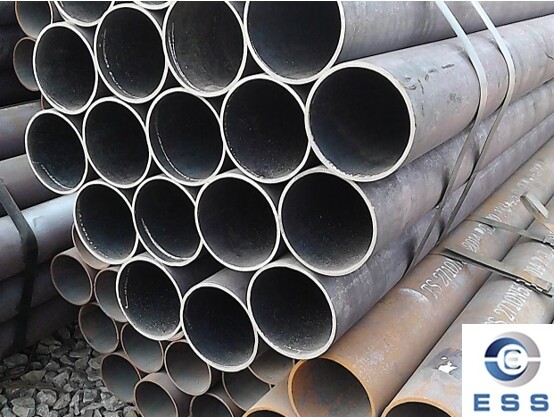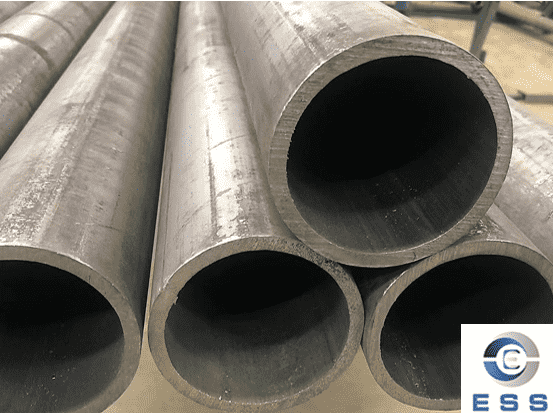A Beginner's Guide to Understanding Seamless pipe HS Code
The international trade industry relies heavily on a standardized system for classifying goods. The Harmonized System (HS) Code is a crucial tool used worldwide to facilitate seamless trade operations. This guide aims to provide a comprehensive overview of the HS Code system, its structure, and its significance in international trade. Whether you are a beginner in the field or looking to enhance your understanding, this essay will equip you with the essential knowledge to navigate the complexities of the seamless HS Code.
In an increasingly interconnected global marketplace, the need for a standardized system for classifying traded goods is paramount. The Harmonized System (HS) Code provides a comprehensive classification framework that enables countries to classify products uniformly, facilitating seamless trade operations across borders.
Importance of HS Code:
Understanding the HS Code system is essential for businesses engaged in international trade, customs officials, logistics providers, and other stakeholders. Accurate HS Code classification ensures compliance with customs regulations, facilitates proper documentation, and enables accurate determination of customs duties and taxes.

1.Understanding the Harmonized System (HS)
a. Evolution and Historical Context:
The HS Code system originated in the 1980s through collaborative efforts among various international organizations. It builds upon earlier classification systems and aims to provide a global standard for classifying goods.
b. Structure and Hierarchical Classification:
The HS Code is organized hierarchically, with a six-digit code representing the broadest category and additional digits providing more detailed classifications. This hierarchical structure allows for the systematic identification of goods based on their characteristics, materials, and intended uses.
c. Importance of Uniform Classification:
Uniform classification is crucial for harmonizing trade data and ensuring consistent application of customs duties and regulations across countries. The HS Code system provides a standardized framework that enhances transparency, predictability, and efficiency in international trade.
d. Harmonized System Code Structure:
The HS Code consists of 21 sections, with each section containing chapters, headings, subheadings, and subdivisions. The codes are arranged in a logical manner, allowing users to progressively narrow down the classification to identify specific goods accurately.
2.Purpose and Significance of the HS Code
a. Facilitating International Trade:
The HS Code system simplifies the documentation process for importers and exporters by providing a universally recognized classification for goods. It streamlines customs procedures, reducing delays and costs associated with manual inspections and discrepancies in classification.
b. Determining Customs Duties and Taxes:
HS Codes play a crucial role in determining the applicable customs duties, taxes, and trade restrictions for specific products. Customs authorities refer to the HS Code to establish the correct tariff rates and regulatory requirements, ensuring fair and consistent treatment of goods.
c. Trade Data Collection and Analysis:
HS Codes serve as a fundamental tool for collecting trade statistics at the national and international levels. Governments and international organizations utilize this data to monitor trade flows, assess market trends, analyze economic performance, and develop informed trade policies.
d. Monitoring Import/Export Statistics:
The HS Code system enables countries to monitor their imports and exports accurately. By analyzing these statistics, governments can evaluate the competitiveness of domestic industries, identify potential trade imbalances, and formulate effective trade strategies.
3.How to Interpret HS Codes
a. General Rules for Classification:
The General Rules for the Interpretation of the Harmonized System (GRIs) provide guidelines for classifying products based on their essential characteristics. These rules assist users in determining the most appropriate HS Code for a given product.
b. Applying Section and Chapter Headings:
Users start by identifying the relevant section and chapter headings to broadly classify a product. This initial step narrows down the range of potential HS Codes.
c. Utilizing Subheadings and Subdivisions:
Subheadings and subdivisions provide more specific classifications within chapters. Analyzing the product's attributes, composition, and intended use helps identify the appropriate subheadings or subdivisions.
d. Identifying Specific Product Descriptions:
To assign the correct HS Code, one must consider the specific product description, including its essential characteristics, materials, and functions. Careful analysis and research are essential for accurate classification.
4.HS Code Application Process
a. National Customs Authorities:
Each country has its customs authority responsible for HS Code application and enforcement. Importers and exporters must comply with the regulations and requirements set by their respective customs agencies.
b. Obtaining HS Code Information:
HS Code information can be obtained from national customs websites, publications, or expert advice. Customs agencies provide resources to help businesses determine the appropriate code for their products.
c. Self-Classification vs. Expert Assistance:
Businesses can choose to self-classify their goods using available resources or seek expert assistance from customs brokers, consultants, or trade professionals. The decision depends on the complexity of the products, available resources, and the importance of accuracy.
5.Challenges and Limitations of the HS Code System
a. Complexity and Subjectivity:
HS Code classification can be challenging due to the system's complexity and subjective interpretation of product characteristics. Some goods may have multiple potential classifications, requiring careful analysis and consideration.
b. Ambiguity and Interpretation Issues:
Certain products may not fit precisely within a single HS Code, leading to ambiguity and interpretation challenges. Customs authorities and international organizations continually address these issues to improve the system's clarity and consistency.
c. Evolving Product Classification:
Advancements in technology and changes in product compositions create challenges for the HS Code system. As new products emerge, the system must adapt to accommodate evolving trade dynamics and accurately classify novel goods.
d. Non-Harmonized Products:
Certain products, such as specialized machinery or unique items, may not have specific HS Codes. In such cases, alternative methods, such as customs rulings or consultations, are necessary to determine the appropriate classification.
6.International Trade Documentation and HS Codes
a. Commercial Invoices:
Commercial invoices include HS Codes for each item being traded. They serve as a primary document for customs clearance and provide essential information for customs authorities to assess the correctness of classification.
b. Customs Declarations:
Customs declarations require the inclusion of HS Codes to declare the nature and value of goods being imported or exported. Accurate HS Code declaration is vital to ensure compliance with customs regulations and facilitate smooth clearance procedures.
c. Bill of Lading/Airway Bill:
Transportation documents, such as bills of lading or airway bills, may include HS Codes. These codes assist customs officials in verifying the accuracy of declared goods during the transportation process.
d. Certificates of Origin:
Certificates of origin, indicating the country where goods were produced or manufactured, may require HS Codes. These certificates help customs authorities assess the eligibility for preferential trade agreements and apply relevant customs procedures.
7.Common Misconceptions and FAQs about HS Codes
a. "HS Codes are the same worldwide":
While the first six digits of HS Codes are internationally harmonized, countries may introduce additional digits to meet specific national requirements or capture finer product differentiations.
b. "HS Codes determine product quality and standards":
HS Codes are primarily for classification and not intended to determine product quality, safety, or compliance with technical standards. Additional regulations and standards apply for these purposes.
c. "HS Codes are static and unchanging":
HS Codes are periodically updated and revised to accommodate changes in international trade and product developments. Staying informed about code revisions is crucial to ensure accurate classification.
8.HS Code Resources and Tools
a. National Customs Websites:
Customs authorities often provide official HS Code information, explanatory notes, and guidelines on their websites. These resources offer valuable insights into country-specific regulations and interpretations.
b. Online Databases and Lookup Tools:
Various online databases and lookup tools offer HS Code search functionalities, enabling users to find relevant codes based on product descriptions, keywords, or international trade data.
c. Consulting Expert Advice and Training:
Seeking expert advice from customs brokers, trade consultants, or attending training programs can help businesses enhance their understanding of the HS Code system and ensure accurate classification.
9.Future Trends and Developments
a. Digitalization and Automation:
Technological advancements are driving the digitalization and automation of customs procedures, including HS Code classification. Electronic systems and artificial intelligence can streamline the process and enhance accuracy.
b. Integration with Customs Systems:
Efforts are underway to integrate HS Code classification with customs systems to improve efficiency, reduce manual interventions, and facilitate real-time data exchange between customs authorities and traders.
c. Expanded Harmonization Efforts:
International organizations and customs administrations continue to work toward further harmonization of HS Codes, addressing challenges, enhancing clarity, and accommodating emerging trade practices.
Conclusion
a. Recap of Key Points:
Understanding the seamless HS Code system is crucial for individuals and businesses engaged in international trade. This guide has covered the structure, purpose, and interpretation of HS Codes, as well as their application, challenges, and significance in trade operations.
b. Importance of HS Code Understanding:
Accurate HS Code classification ensures compliance with customs regulations, facilitates proper documentation, and enables seamless trade operations. Maintaining an up-to-date understanding of HS Codes is essential for navigating the complexities of international trade.
c. Continuous Learning and Adaptation:
Given the evolving nature of international trade, it is essential to continuously learn and adapt to changes in HS Codes, regulations, and trade practices. By staying informed and seeking expert advice when needed, businesses can effectively utilize the HS Code system to enhance their trade operations.
In conclusion, a comprehensive understanding of the seamless HS Code system is vital for individuals and businesses engaged in international trade. By grasping the system's structure, purpose, and application process, one can ensure compliance, facilitate efficient trade operations, and utilize trade data effectively. While challenges and limitations exist, continuous learning and adaptation to changes in the system contribute to successful navigation of the dynamic world of international trade.













 Eastern Steel Manufacturing Co.,Ltd not only improve product production and sales services, but also provide additional value-added services. As long as you need, we can complete your specific needs together.
Eastern Steel Manufacturing Co.,Ltd not only improve product production and sales services, but also provide additional value-added services. As long as you need, we can complete your specific needs together.










